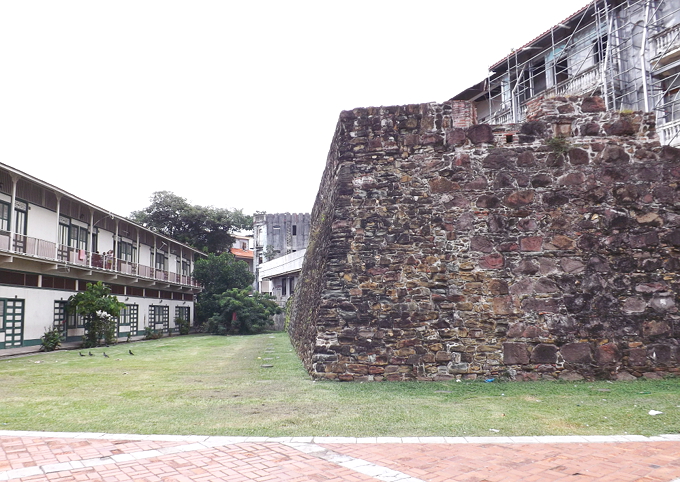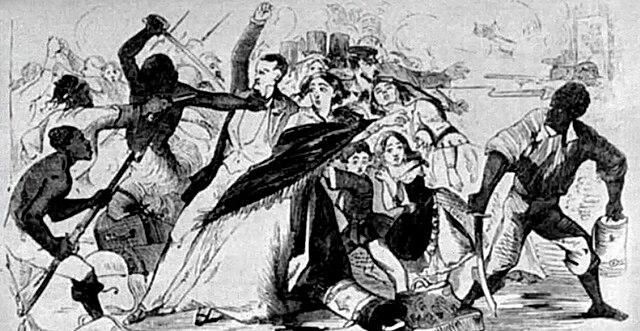Once upon a time this wall completely cut off Panama City’s Casco Viejo, and in front of it there was a moat. There was a drawbridge that was hauled up at the end of each day. By custom the only black people allowed to stay in the neighborhood were domestic servants and government workers – some of the latter being cops. Photo by Eric Jackson.
168 years ago today…
by Eric Jackson
Back then, slavery – never a strict color-line thing here – had only been formally abolished for five years, and five years had yet to come before the United States burst into sectional warfare that was the most awful calamity, still denied by much of the mainstream US culture and largely ignored by the rest.
Back then – April 15, 1856 — there were these would-be American conquerors from the southern slave states, looking to imitate what had happened in Texas by conquering parts of Latin America and turning them into new slave states to affect the balance of power in the US Senate.
The most infamous of these men, called filibusters, was a “gray-eyed man of destiny,” William Walker. To have a Casco Viejo in which the only black people welcome at night were domestic servants must have looked like an attractive prospective capital of a new slave state to men like this. MOST of the Americans passing through here, however, were just on their way to California.
To the cruder Americans at a time when popular and legal US opinion was that black people had no rights that whites were bound to respect, a Panama without slavery was a place for constant insults and fights. It came to a head in April of 1856 in the slums outside the Casco Viejo walls, when a white American named Jack Oliver took it upon himself to argue about the price of a piece of watermelon with a black vendor, José Manuel Luna. The latter asserted his right to be paid a dime and the former introduced a pistol into the argument. When the smoke cleared dozens were dead and US forces invaded Panama not long afterward.
A shot was fired in the argument. Nobody was hit, but a crowd gathered and someone began to ring the bell at the Santa Ana Catholic Church, which attracted an even bigger crowd. The Americans fled back to the old train station, which is no longer used for that purpose but is on Plaza Cinco de Mayo. The governor – this was part of the Republic of New Granada then – sent in the police to protect the Americans.
But as the cops arrived in formation, accompanied by the governor, all the Americans saw was a formation of black men with guns. The Americans opened fire on the cops and the governor and police withdrew. An angry mob surged to the station and around 60 people, most of them Americans, were killed.
Back in the States racially charged, inflammatory press stories were published and soon Washington sent in the Marine Corps to collect an indemnity from New Granada for wrongful deaths and injuries, and property losses to the Americans among the casualties. Uncle Sam didn’t reimburse Mr. Luna for his watermelon slice.
American press depiction of the event in Frank Leslie’s Illustrated Newspaper, May 1856, as in black savages attack innocent Americans. Today’s MAGA types would believe it, too.
Contact us by email at thepanamanews@gmail.com
To fend off hackers, organized trolls and other online vandalism, our website comments feature is switched off. Instead, come to our Facebook page to join in the discussion.
These links are interactive — click on the boxes
>












